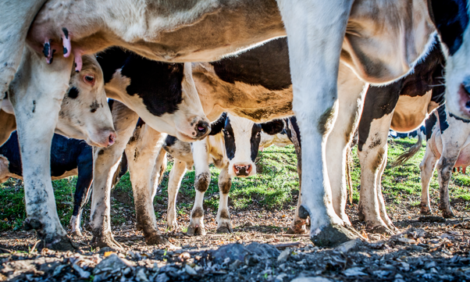



Where Does Russian Dairying Go Now?
RUSSIA - In order to become a more profitable and sustainable sector Russian dairy farms need to take a holistic approach to cow comfort.A sophisticated level of farming has already been reached in Russia and it is a change of ethos rather than drastic practical measures that will ensure productive and profitable animals in the future.
This was the take home message from the DeLaval cow longevity conference in St Petersburg last week.
The audience of farmers and veterinarians was repeatedly advised that, while farm consultants have the basic ingredients and principles for success, there are no magic cure-all answers.
One of the basic principles emphasised by Israeli farmer and DeLaval nutritionist Lior Yaron and DeLaval director Dr Charlotte Hallen Sandgren was that cows need care throughout their whole life.
Calf health, youngstock management and heifer rearing should not be overlooked as these are the prerequisite stages in which you prepare an animal for an intensive life, ideally for a minimum of four or five lactations.
Once in the milk herd, a two year old cow should be subject to consistent feeding and management issued by committed and talented staff and mechanisation where fit.
Above all, delegates insisted that farming is specific to location and even in Russia there will be huge variation in farming style, forage quality, cow energy requirements and build standard depending on whether the farm stands in the south, central or Siberian regions.
With the lack of a magic bullet solution, Russian agriculture must embrace the best from elsewhere and also explore opportunity within.
For example, local cows could be utilised better alongside Holstein-Friesian genetics and other higher producing European lines.
This was according to Vladimir Labinov (pictured), head of the livestock department within the Ministry of agriculture who echoed sentiments about cow longevity and sustainable growth.
He said that after a four year period when dairy farming could not keep up with poultry or other areas, 2013 brought a solid year of milk deliveries.
He added that most areas, barring a drought-stricken Siberia in 2012, have recently experienced yield increases to levels not even dreamt of 20 years ago.
Average cow longevity in Russia is 3.5 lactations, with Mr Labinov targeting 4.5 and higher.
He said cow longevity is key to economic performance that there was a great need for more automation in Russia.
“We need to turn the tables and improve the situation in dairy farming," said. “Over the next five years we need to work hard to improve dairy farms.”
Michael Priestley
News Team - Editor
Mainly production and market stories on ruminants sector. Works closely with sustainability consultants at FAI Farms



